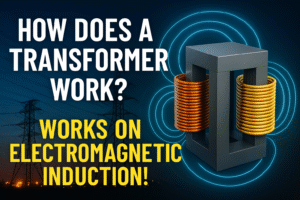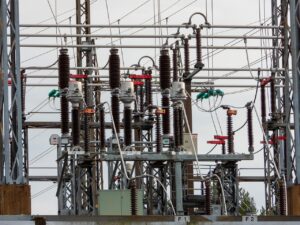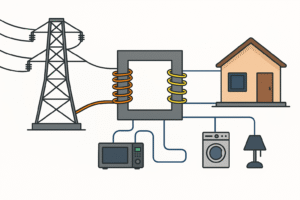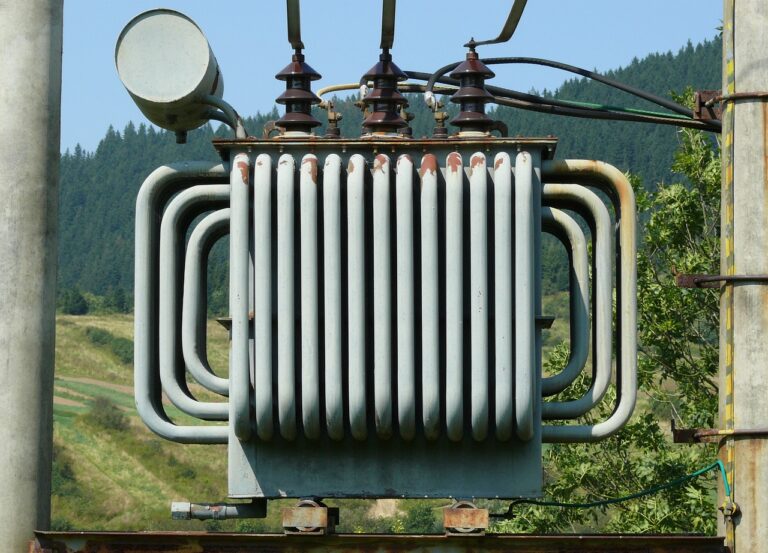Introduction 🌍
Ever wondered how your gadgets receive the right amount of electricity without frying up? Enter the transformer, a silent workhorse that ensures safe and efficient power distribution. From home appliances to industrial machines, transformers play a pivotal role in our daily lives. Let’s dive into their principle, uses, and significance! 🔥


A transformer operates on the basic principle of electromagnetic induction. It consists of two coils—primary and secondary—wrapped around a core. When alternating current (AC) flows through the primary coil, it creates a magnetic field that induces voltage in the secondary coil.
The two main types are:
- Step-up transformers 🚀—Increase voltage, commonly used in power transmission.
- Step-down transformers 🔽—Reduce voltage, making electricity safer for household appliances.

Transformers are everywhere! Here’s where they shine:
✅ Power Transmission—Ensures electricity travels long distances efficiently.
✅ Industrial Machines—Supports heavy-duty equipment requiring precise voltage levels.
✅ Medical Equipment—Delivers stable electricity for life-saving devices.

You might not see them, but transformers are hidden inside your gadgets:
🔹 Mobile Chargers—Convert high-voltage power into safe levels.
🔹 Refrigerators—Regulate the electricity flowing into cooling systems.
🔹 TVs & Computers—Ensure stable voltage supply for smooth functioning.
Why Transformers Matter in Daily Life ⚡
Imagine a world where your appliances receive raw, unstable electricity. Chaos, right? Transformers keep our electronics safe, ensure efficient energy transfer, and prevent voltage fluctuations. Whether you’re charging your phone or watching a movie, a transformer is working behind the scenes to make it happen.
💡 Final Thought: Without transformers, modern civilization would struggle to function. They are the backbone of electrical distribution, ensuring convenience, efficiency, and safety every single day! 🚀

